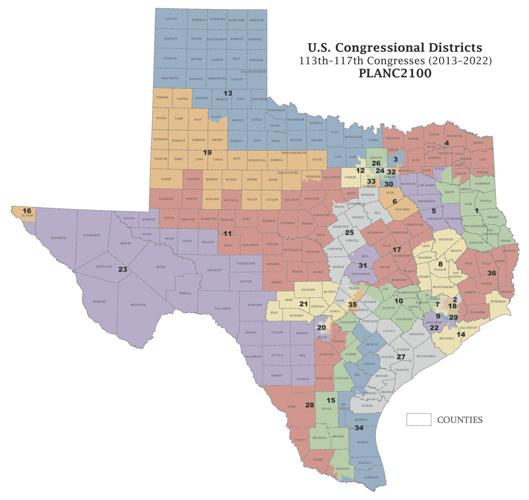Texas Gov. Greg Abbott signed the new congressional maps for the state into law Oct. 25.
The maps were drawn by the Republican lawmakers with State Sen. Joan Huffman (Houston) leading the process.
The maps were met with widespread criticism from Democratic lawmakers, who claimed that the maps were gerrymandered to help Republicans maintain control in the state.
The new maps are expected to face a myriad of legal challenges.
The Mexican American Legal Defense and Educational Fund (MALDEF) filed a lawsuit challenging the maps before they were even signed into law earlier this month.
MALDEF represents a group of individual voters and organizations that represent Latinos, including LULAC, La Union del Pueblo Entero and the Texas Association of Latino Administrators and Superintendents.
The lawsuit claims that the drawn districts on the maps unconstitutionally weaken Latino voting strength and violate the Voting Rights Act, a federal law that, in part, helps prohibit racial discrimination in voting.
The redistricting process occurs every 10 years after new census data is released.
In that recently-released census data, Texans of color accounted for 95% of the state’s population growth.
The census numbers show that the state’s population is about 40% white, 39% Hispanic, 12% Black and 5% Asian, with the other 4% identifying as other or having more than two races.
However, in the new district maps, the majority demographic group among eligible voters is white in 23 of the 38 congressional districts, 89 of the 150 State House districts and 20 of the 31 State Senate districts.
In comparing the previous map to the maps now signed into law, the number of districts where Hispanics are the majority dropped from eight to seven, and the number of districts where Black residents make up the majority drops from one to zero.
The state, due to its booming growth in population, gained two new seats in the House of Representatives, and those were drawn into the new map with white voters as the majority in both.
According to a study of votes compiled by the Texas Tribune, had the new map been in place during the 2020 presidential election, Donald Trump would have won 25 of the state’s 38 congressional districts, as opposed to the 22 he won under the previous district alignment.
This redistricting process is the first since the Voting Rights Acts passed in 1965 that Texas was not required to report its changes to the U.S. Department of Justice or a federal court before the district maps could be signed into law by the governor.
That requirement, known as preclearance, had been in place for nearly 50 years because, in every previous redistricting process, federal courts found that Texas lawmakers discriminated against a certain group of voters, primarily voters of color.
The new maps, barring any intervention from a state or federal court, go into effect in next year’s primary and general elections.
The elected members of the districts representing counties covered by Coastal Bend Publishing are as follows:
Congressional
District 15 (Karnes, Live Oak counties) – Vicente Gonzalez-D
District 27 (Refugio, partial San Patricio) – Michael Cloud-R
District 28 (McMullen) – Henry Cuellar-D
District 34 (Bee, Goliad, partial San Patricio) – Filemon Vela Jr.-D
State House
District 17 (Karnes) – John Cyrier-R
District 30 (Refugio, Goliad) – Geanie W. Morrison-R
District 31 (Live Oak, McMullen) – Ryan Guillen-D
District 43 (Bee, San Patricio – J.M. Lozano-R
State Senate
District 18 (Goliad, Refugio) – Lois W. Kolkhorst-R
District 21 (Bee, Live Oak, McMullen, San Patricio) – Judith Zaffrini-D
•kkeller@mysoutex.com•








